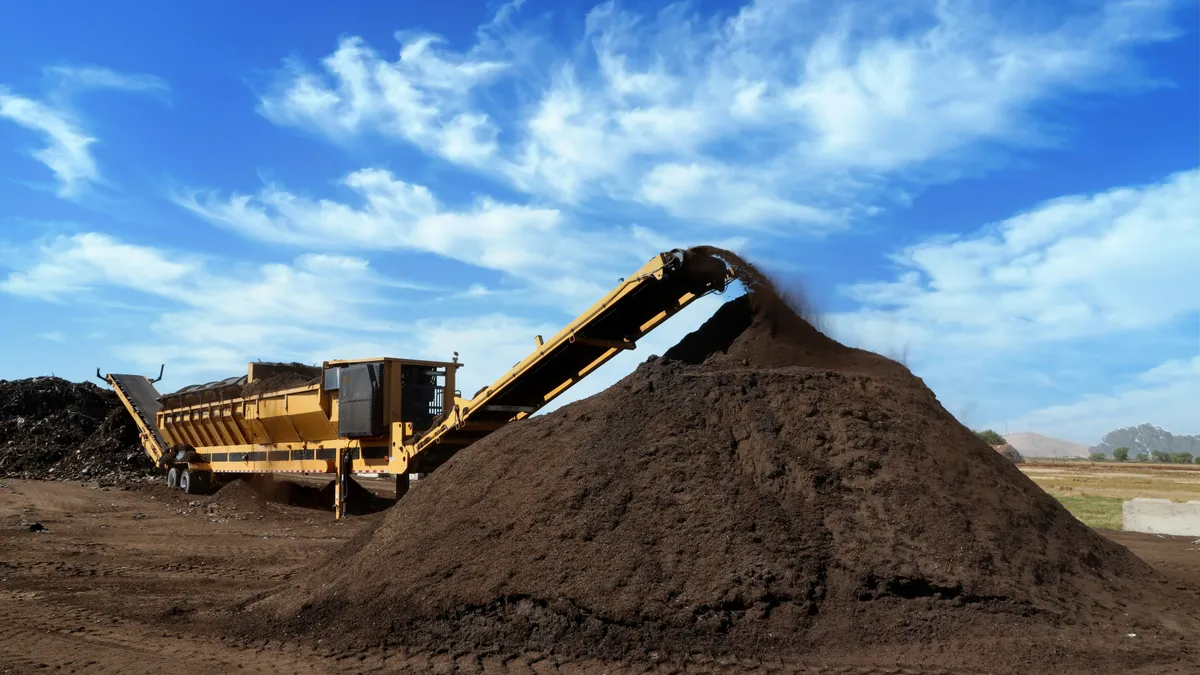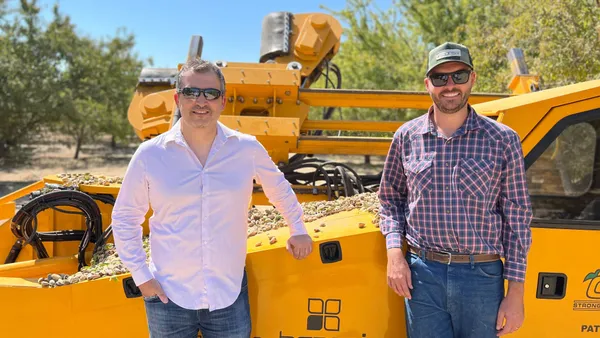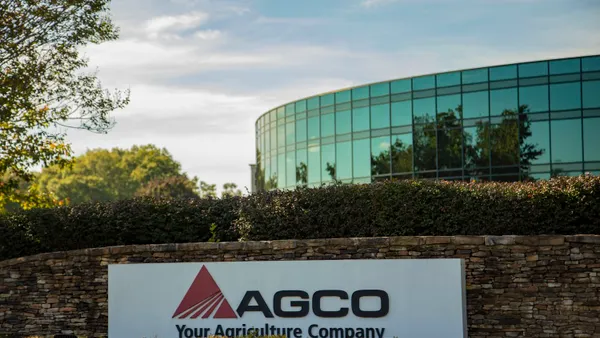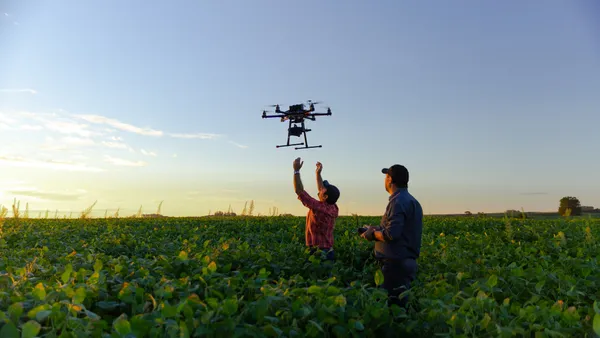Dive Brief:
- Despite growing enthusiasm and supportive policies for composting, the number of facilities in the U.S. has grown just 8% between 2018 and 2023, according to a report from the Composting Consortium. The group, which is managed by Closed Loop Partners’ Center for the Circular Economy, says more investment is needed to meet demand.
- The report identifies the opportunity available for investors looking to get involved in the industry. It notes that, at most, 4% of the nation’s 66 million tons of wasted food annually is being composted today.
- As the industry goes, tailwinds identified by researchers include rising landfill costs, state-wide organic diversion requirements and rising collections access. Headwinds include product demand and pricing, permit difficulties and financial support.
Dive Insight:
The new research is the latest in a string of reports sponsored by the Composting Consortium, which has worked to provide clarity on the challenges and opportunities in the composting industry. The reports have come at a time when the federal government and other major stakeholders are looking to organics recycling as a solution to climate change and hunger.
Using data compiled over the last year, the report identifies a gap between the size of composting facilities today and expected need. For instance, the Composting Consortium learned in a survey conducted with BioCycle that more than half of the full-scale food waste composting facilities in the U.S. today process less than 5,000 tons of food waste per year. Yet a town of just 50,000 people would produce more food waste annually than such a facility could handle — about 7,000 tons, or 1.4x the capacity.
“Since the inception of the Composting Consortium, we identified the need to strengthen U.S. composting infrastructure, particularly those solutions that can accept increasingly large and complex organics streams including post-consumer food scraps and compostable food packaging,” Kate Daly, managing director and head of the Center for the Circular Economy at Closed Loop Partners Investment, said in a statement. “Investment, alongside policy and multi-stakeholder collaboration, is critical to achieving this.”
Growth will come at a cost. The report cited data from CalRecycle estimating that implementation of its SB 1383 organics diversion requirement alone would cost $20.9 billion by 2030, but would generate about $17 billion in economic benefits.
Even in states with a strong mandate to divert organics like California, challenges with scaling up infrastructure remain. The report notes that about 2,700 facilities that solely process yard waste exist in the country today, many of which have the potential to be converted to accept food waste as well. But doing so can be challenging due to permitting, according to research from BioCycle.
Those sites that have been able to accept food waste have largely relied on limited federal grant programs from the U.S. Department of Agriculture or EPA, state-level grant programs or limited engagement in the private sector from companies like Atlas Organics, Republic Services and WM.
The upfront costs for creating a composting operation can be steep, especially for more complex systems like an aerated static pile or in-vessel composting system.
The report estimates starting up a new larger-scale project can often cost $125,000 to $250,000 in upfront engineering and permitting costs alone. It also notes that it's "not unusual for the entire up-front approvals processes to take 18 months to three years to complete."
Those constraints could be resolved by a more standardized permitting process, the report says. But researchers also highlighted the role of blended financing to clear those hurdles, often with some form of “patient capital” mixed in. That could include impact investors like Closed Loop Partners' own Infrastructure Group, community development financial institutions and government programs. Private equity is best deployed in situations where a financial backer wants to combine existing facilities, pre-fund the site selection process or shape low-cost capital stacks, the report said.
Despite the challenges, the report also notes policy and macroeconomic drivers are making composting more attractive. It cited data from EREF noting landfill tip fees rose 11% between 2021 and 2022. Meanwhile, a rising number of cities and states are requiring that organic waste be diverted from the municipal solid waste stream, providing a ready feedstock for new facilities.
“The composting industry is at an inflection point in its development, and to meaningfully address food waste, the industry needs to spur investment and industry action,” the report stated.












